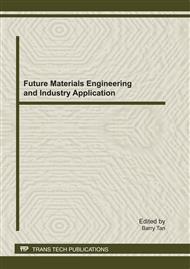p.125
p.130
p.135
p.140
p.145
p.150
p.155
p.160
p.169
Ethanol Production from Non-Detoxified Steam-Exploded Corn Stover Subsequent Enzymatic Hydrolysis by Two Toxin-Tolerant Yeast Strains
Abstract:
Fermentation process for ethanol production from steam-exploded corn stover using toxin-tolerant yeast strains was carried out in order to reduce the water consumption and operation cost. The substrate from steam-exploded did not undergo a detoxification process by wash, and was directly hydrolyzed by enzymes. Two toxin-tolerant stains, Y1 and Y5, were tested to ferment the enzymatic hydrolysate slurry directly to ethanol. In the enzymatic hydrolysate slurry containing inhibitory compounds, the strain Y1 and Y5 could convert the sugar to ethanol with ethanol concentration of 47.0 g/L and 47.2 g/L corresponding to 95.9% and 96.4% of the theoretical maximum, respectively.
Info:
Periodical:
Pages:
145-149
Citation:
Online since:
October 2011
Authors:
Price:
Сopyright:
© 2012 Trans Tech Publications Ltd. All Rights Reserved
Share:
Citation:


